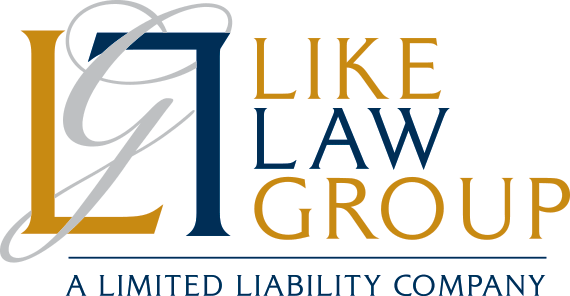A trustee is a person or entity responsible for managing and administering your trust according to your instructions and in accordance with state law. They are considered a fiduciary (meaning they are held to a higher standard of care and owe certain duties to the beneficiaries). As a fiduciary, a trustee must protect the trust’s investments and act in the best interests of the beneficiaries. They must prepare and maintain trust accounting records and prepare tax-related forms, providing this information to the beneficiaries at their request. At some point, they may need or be required to liquidate or sell the trust’s accounts and property.
A Trustee’s Authority to Sell Assets While Administering the Trust
When administering a trust, the trustee might encounter situations in which they need to convert trust assets into cash to provide liquidity to the trust. This could mean converting trust assets such as stocks and bonds or selling other trust property such as real estate or other high-value assets to generate the necessary funds. Though this decision must be based on prudent investor rules or standards and be in the best interest of the beneficiaries, trustees generally do not need beneficiary approval to liquidate or sell trust property, but they may seek it to avoid potential arguments in court regarding their decisions and authority. The biggest restriction is that trustees are not allowed to sell trust property for their own benefit. There may be an exception to this restriction if the trustee is also a trust beneficiary.
Creating Liquidity
A trustee may need to create liquidity for various reasons:
- Meeting financial obligations. The trust may have ongoing financial commitments, such as taxes, mortgage payments, or insurance premiums. By creating liquidity, the trustee can fulfill these obligations without disrupting the overall trust management.
- Covering administrative costs. There could be administrative expenses related to legal and accounting services, as well as fees for managing the trust. Creating liquidity ensures that the trustee can cover these costs promptly and efficiently.
- Fulfilling distributions. If the trust mandates periodic or one-time distributions to beneficiaries, creating sufficient liquidity allows the trustee to meet these distribution requirements in a timely manner.
- Responding to opportunities or challenges. Market opportunities or unexpected financial challenges may arise that require quick access to funds. Creating liquidity enables the trustee to seize favorable investment opportunities or address unforeseen financial needs effectively.
Investment Strategy
A trustee has the authority and responsibility to manage the trust’s investments in a manner that aligns with the trust’s goals and changing financial circumstances. It may be necessary to modify the investment strategy for a variety of reasons:
- Evaluating economic conditions. The trustee must continuously evaluate economic conditions, market trends, and the performance of the trust’s assets, such as accounts and other property. If the existing investment strategy no longer serves the trust’s objectives, the trustee may need to consider adjustments.
- Risk management. Based on the trust’s performance and the financial landscape, the trustee may need to rebalance the portfolio to ensure an appropriate level of risk and potential return. This could involve diversifying investments or reallocating assets.
- Adapting to beneficiary needs. Changes in beneficiary circumstances, such as increased education expenses or healthcare needs, may necessitate a shift in the investment strategy to generate income or accommodate specific beneficiary requirements.
- Long-term growth versus income generation. Depending on the trust’s purpose, the trustee may need to adjust the investment approach to prioritize long-term growth, income generation, or a balanced approach, ensuring the trust’s sustainability and fulfillment of its intended purpose.
You Can Control the Sale of the Trust’s Assets
If you are the trustmaker and have concerns about a trustee’s authority to liquidate or sell accounts and property, you can provide specific guidelines controlling the sale of the trust’s assets.
When establishing a trust, you may have specific assets you would like to preserve, whether for sentimental reasons, future generations, or other purposes. However, you should be cautious when including provisions that restrict the liquidation or sale of particular assets.
Placing restrictions on liquidating or selling assets in the trust can help preserve family heirlooms, properties with historical or emotional significance, or specific investments that align with the trust’s long-term goals. However, overly restrictive provisions can present challenges to the trustee, especially in situations where the trust may require liquidity, when there is a need to change the investment strategy to meet financial obligations or adapt to market conditions, or if there have been changes in tax laws, economic conditions, or family dynamics.
It is essential to strike a balance between preserving important assets like certain property or accounts and allowing the trustee the flexibility needed to effectively manage the trust, ensuring the trust’s long-term viability and the best interests of the beneficiaries.
A Trustee’s Responsibility Regarding Distributions to Beneficiaries
Overall, the trustee must adhere to the instructions laid out in the trust agreement. If the trust’s terms specify that the trustee must distribute money or property to a beneficiary at a particular future date or upon meeting specific conditions, the trustee is obligated to follow these instructions precisely. That is why making informed decisions when creating a trust and defining the trustee’s role and responsibilities is important.
Stipulating specific instructions regarding when and how distributions should be made to beneficiaries often requires attaching conditions to distributions, such as timelines and other triggering events like a beneficiary’s age or completion of a milestone. Whatever the conditions are, the trustee will usually be required to follow them unless they are illegal or against public policy.
Communication Between a Trustee and Beneficiaries Is Critical When Selling Trust Assets
The trustee should—and in some instances is required to—maintain open communication with both the beneficiaries and any co-trustees, keeping them informed about the trust’s status and decisions when creating liquidity and changing investment strategies that may affect upcoming distributions. Transparency helps answer questions and manage expectations.
Accurate and thorough recordkeeping is essential to demonstrate compliance with the trust terms and the law. Detailed records can help explain the rationale behind each decision, and relevant documents can support the actions taken by the trustee.
If you are a trustee and are unsure about the trust terms relating to the management or sale of assets, we can assist you and any financial professionals with whom you are working. If you are creating an estate plan that includes a trust, working with an experienced attorney to craft a comprehensive trust agreement can help ensure your trustee’s compliance and protect the interests of both the trust and its beneficiaries.
We can help you memorialize your intentions in your trust agreement and strike a balance between preserving your life savings and granting the trustee the necessary flexibility to manage the trust successfully. Give us a call to schedule your appointment today.












